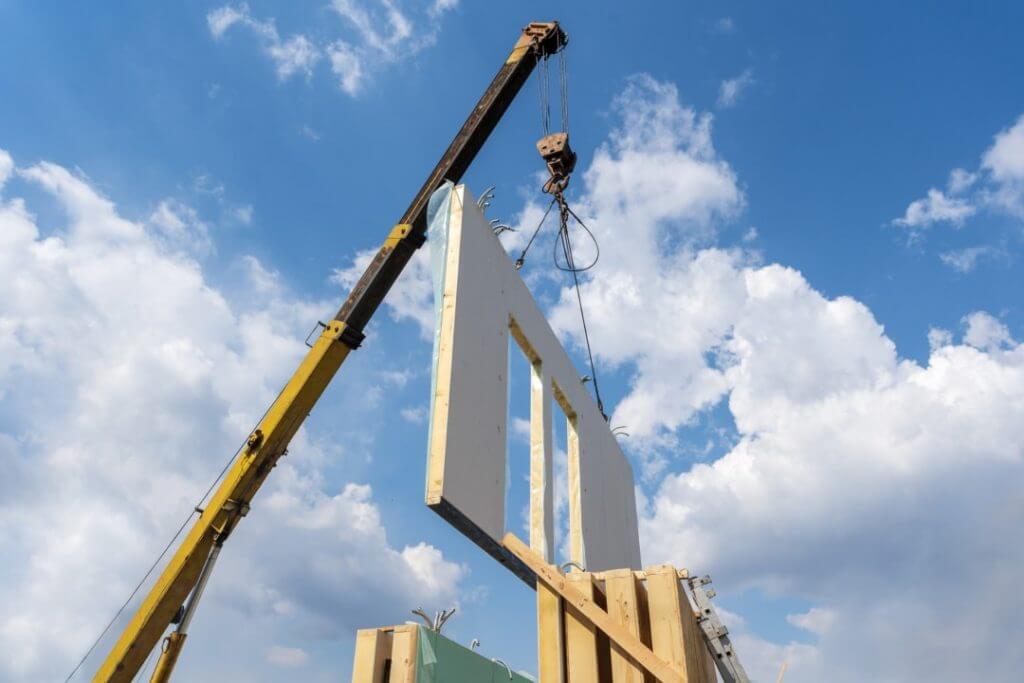Offsite construction has numerous benefits. Compared to traditional construction, it can bring efficient practices, new technologies, and increased safety to a project. Another benefit to offsite and modular construction is their reduction in construction and demolition. Environmentally sustainable practices are inherent in many modular delivery systems, typically resulting in less waste than traditional construction. Below are a few reasons why offsite and modular construction are greener ways to build.
Reusability and Recycling of Materials
A significant portion of modular construction takes place in an offsite factory. This factory typically houses project materials and other materials regularly used in modules. Where materials are ordered, but are unused for whatever reason (such as the owner changing their mind, a change in specifications, or otherwise), the materials are not wasted or thrown away. Rather, the materials are recycled and reused. The unused materials can be re-inventoried and stored inside the factory’s warehouse for future use on other projects. In turn, material packaging, like wood pallets, plastic and cardboard, is also reduced.[1] Reusability of materials therefore reduces the overall amount of waste generated from the project.
Control of Material Exposure
Since many of the project’s materials are stored in an offsite factory, the materials are not subjected to outdoor conditions during downtime. They are often stored inside of a warehouse, where they are sheltered from rain, snow, heat, direct sun, and other conditions. Warehouses protect the materials so that they remain in good condition until used on the project. Overall, this results in less wasted materials than traditional construction, where materials are often stored outside without adequate protection.
Reduced Site Visits
Traditional construction requires multiple logistical routes for the delivery of materials and tools to the site, typically taking place at different dates and times. Additionally, many contractors and laborers make daily visits to the site to perform work. Offsite and modular construction, on the other hand, involves a single point of delivery and has a limited number of deliveries to the site. The modules are assembled offsite, then sent in a limited duration to the site where they are installed. Because of this delivery system, there is inherently a reduced number of deliveries to the project site. Additionally, since modules are already assembled upon delivery, it results in decreased labor time traditionally employed on the project site and less commuting by contractors and laborers.
Concurrent Fabrication and Site Preparation
Traditional construction schedules typically depict preparation of the building site, followed by construction of the building onsite. This is not necessarily the case with offsite and modular construction. Modules are fabricated concurrently with the preparation of the building site, resulting in an overall reduction in construction time and less energy used on the project. Factories are better positioned to control energy use and emissions as opposed to traditional onsite construction. Furthermore, with modules being constructed inhouse, less workers are needed onsite, thereby reducing energy output, noise disruption, and air pollution to the site’s environment and the surrounding communities.
These are only a few aspects of offsite and modular construction’s green practices. Overall, offsite and modular construction can help mitigate damage to the environment with their inherent environmentally sustainable practices. Because of this, and many other benefits, modular construction will continue to gain traction as a popular method for quick, affordable, and sustainable construction throughout the United States.
[1] See, WRAP Report Current Practices and Future Potential in Modern Methods of Construction: http://www.modular.org/marketing/documents/wrap_modernmethodsconstruction_report.pdf
E204-2017 Sustainable Projects Exhibit , has been developed for use on a wide variety of sustainable projects, including those in which the Sustainable Objective includes obtaining a Sustainability Certification, such as LEED® (Leadership in Energy and Environmental Design), or those in which the Sustainable Objective is based on incorporation of performance-based sustainable design or construction elements. E204–2017 addresses the risks, responsibilities and opportunities unique to projects involving substantial elements of sustainable design and construction (sustainable projects). E204–2017 is not a stand-alone document, but is intended to be attached as an exhibit to an existing agreement on a project that includes a Sustainable Objective. E204–2017 is intended to replace the Sustainable Projects documents included in the Conventional (A201) family of AIA Contract Documents.
AIA Contract Documents has provided this article for general informational purposes only. The information provided is not legal opinion or legal advice and does not create an attorney-client relationship of any kind. This article is also not intended to provide guidance as to how project parties should interpret their specific contracts or resolve contract disputes, as those decisions will need to be made in consultation with legal counsel, insurance counsel, and other professionals, and based upon a multitude of factors.

